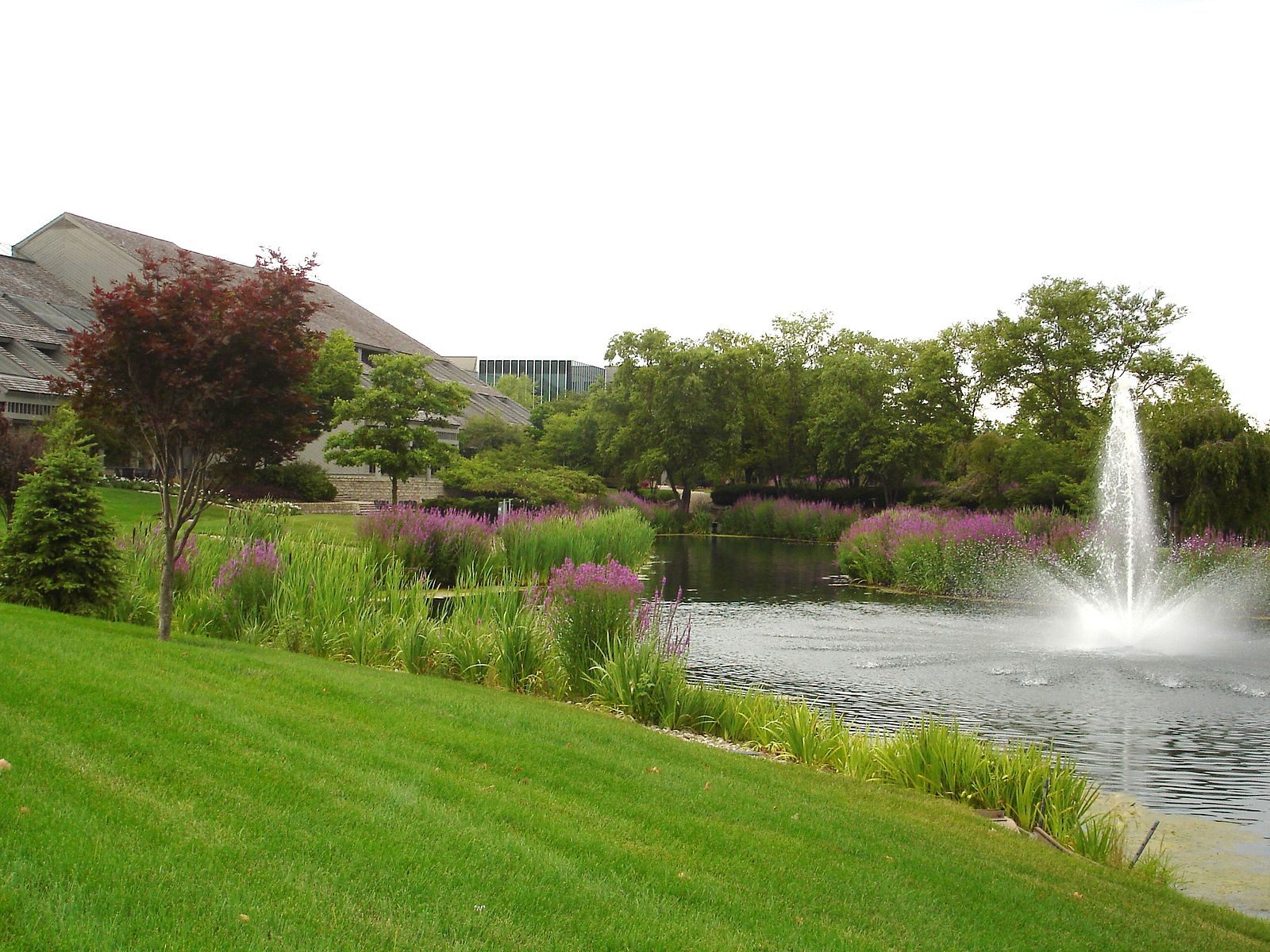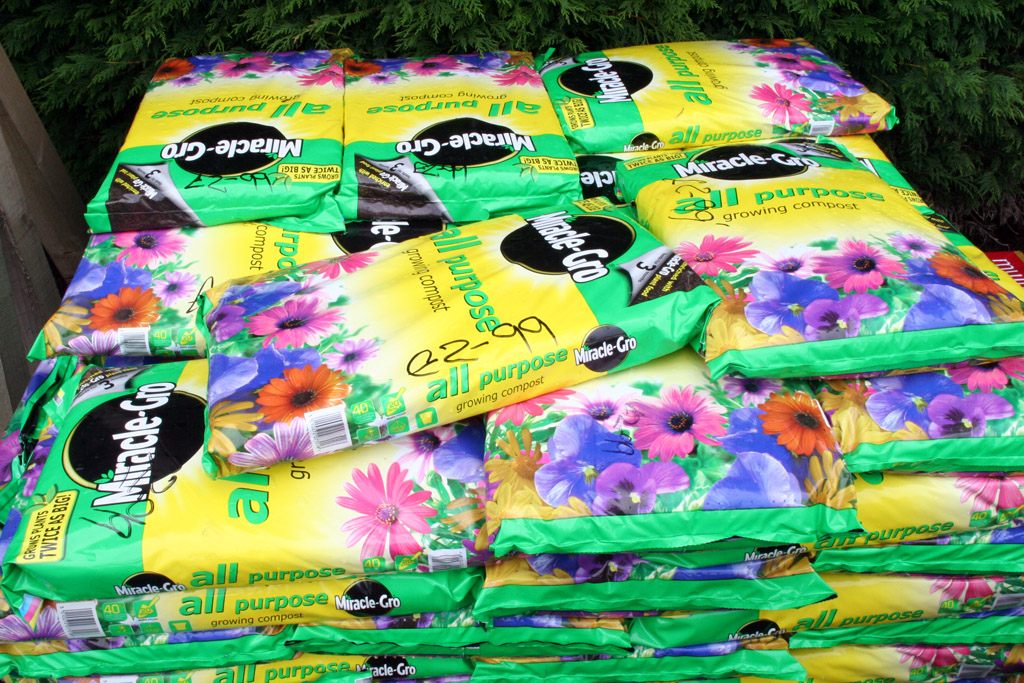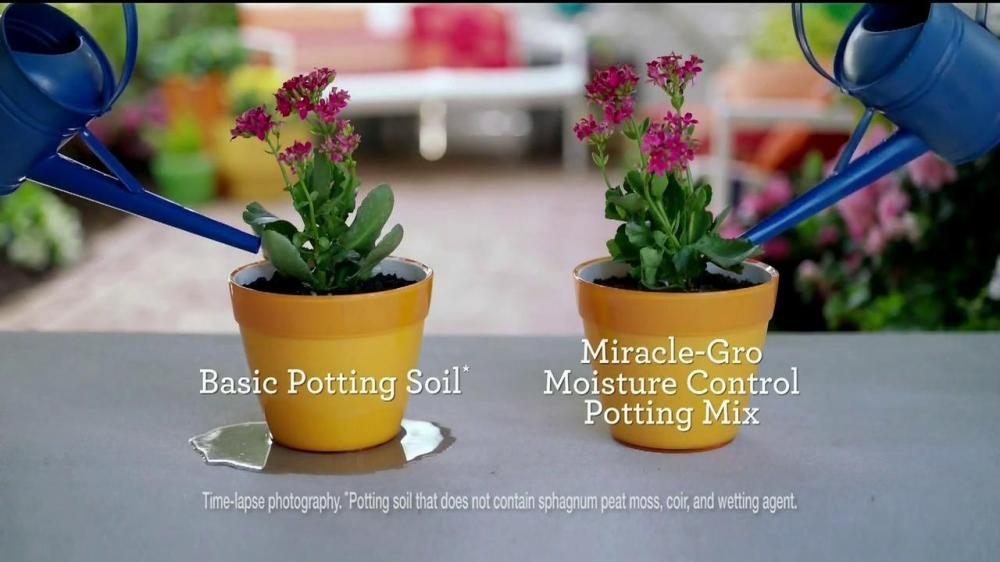How a Concentration Camp Survivor and an American Huckster Created the Magic Crystals of Miracle-Gro

A still from “Flower Magic,” a recent Miracle-Gro ad. (Image: Miracle Gro/YouTube)
Wander through the gardening section of pretty much any department store and you’ll see the same color combo lining packages along the aisle: green, yellow and black. Inside these distinctive bags, boxes, and bottles are the magical blue-green crystals that put Demeter-like powers within reach of anyone with a foot of dirt to spare. Miracle-Gro.
What is Miracle-Gro? For hobbyist gardeners, it’s a failsafe, promising an extra boost to homegrown tomatoes and container blossoms. For middle-school botanists, it’s doubly heaven-sent, providing visibly larger plants and a very reliable science fair project. For advertisers, it’s something else entirely—one of the first examples of how a couple of Americans, buoyed by a slogan, a dream, and a workable product, made a whole lot of something out of almost nothing.
But first, Otto Stern had to escape Nazi Germany. Stern, a German Jew, had been arrested during Kristallnacht, deserted by his non-Jewish wife, and imprisoned in a concentration camp. He held on, dreaming of a post-war life. When he was released from the camps after Hitler’s downfall, he left Germany, bouncing from Cuba to America and finally ending up in Geneva, New York. If Gloversville was a glove town, and Danbury a hat city, Geneva was (and is) a plant capital, home to federal and state agricultural agencies, and a capitalist Eden of for-sale trees, flowers and other green stuff. There, Stern began to grow a new life for himself, starting up his own nursery and setting it apart with what was then a novel idea: order from his shop, and he would ship the plants anywhere in the country. You could come home to find a rosebush waiting for you on your porch.

Stern and his staff, at his nursery office in Geneva in 1944. Stern is in the back near the stovepipe. (Photo: Geneva Historical Society/Public Domain)
There was just one problem—said rosebush, having gone through the mail, was a little worse for wear. So in the late 1940s, Stern began selling Ra-Pid-Gro fertilizer alongside his plants as a pick-me-up. It sold so well that he shortly started rethinking his product line. Unbeknownst to him, his business plan was about to get its own shot of phosphorus, thanks to an up-and-coming huckster named Horace Hagedorn.
In 1950, Hagedorn was drumming his fingers as the suburban outpost guy for a small Manhattan firm. He had gotten his start selling radio ads during the Great Depression, and lived by an advertising maxim he’d learned from Martin Small, the inventor of roll-on deodorant: “Find a need, and fill it.” Hagedorn had watched his friends and neighbors move into post-war subdivisions and start caring about their lawns, windowboxes, and backyard gardens—which didn’t mean they were any good at actually taking care of them. Hagedorn himself couldn’t get his tomatoes as big as he wanted them.

Current Miracle-Gro headquarters, now located in Marysville, Ohio. (Photo: Wiki Historian N OH/WikiCommons CC BY-SA 3.0)
To get a nationwide customer base, Stern advertised in national daily papers and on the radio. One day, in pursuit of top-notch placement, he ended up in Hagedorn’s office. Stern and Hagedorn’s professional relationship involved a lot of in-person visits—Stern didn’t like to talk on the phone, because it garbled his thick German accent into incoherence—and a lot of opportunities to shoot the breeze about the plant biz. Stern confirmed Hagedorn’s suspicion that there was a distinct and fillable need for products that helped de-mystify the garden. Not too long after their first meeting, Stern’s Ra-Pid-Gro supplier dumped him, giving him the push he needed. The next time he walked into Hagedorn’s office, it wasn’t to buy an ad, but to start a fertilizer company.
Stern and Hagedorn each put $2000 into this side project. They outsourced the product design to Professor O. Wesley Davidson, an orchid expert who had lived, breathed and slept plant care since his freshman year at Rutgers University. Many years and several degrees later, he was still there, chairing the floriculture department. Davidson came up with a fertilizer formulation consisting of 15 percent nitrogen, 30 percent phosphorus, and 15 percent phosphate, for leaf growth and greenness, root strength, and overall metabolic health. The blue-green crystals could be stored and shipped dry, and were reactivated by water, like some sort of magic dust. They worked well, though, handled directly, the stuff would turn not just your thumb, but your entire hand, green. Hagedorn’s wife Peggy suggested a name—Miracle-Gro, a perfect blend of old-style sincerity and futuristic, convenience-promising abbreviation.

Someone has big plans. (Photo: Crinklecrankle.com/Flickr)
They were in business. In 1951, Hagedorn took some amount of the startup money—whether it was just his half or the whole caboodle is disputed—and used it to buy a full-page ad in the New York Herald-Tribune. According to the Hagedorn Foundation, it was “sprinkled with scientific phrases about things like radioactive isotopes.” The ad grabbed them $22,000 in sales, and Hagedorn carried a wrinkled copy of it around in his suit pocket for decades.
Starting then, the business outsourced most of its physical responsibilities, from manufacturing through distribution, to outside vendors. Hagedorn and Stern focused solely on getting the word out. The partners traveled from hardware store to hardware store, buttering up the managers and furnishing the product and displays for free, asking only to be paid back the take at the end of the month. They commissioned ads by Joseph Csatari, who had worked with Norman Rockwell, and tapped into that same all-Americana sensibility for a series of Miracle-Gro masterworks, which featured happy families at all stages of life puttering around their gardens. In the 1960s, their new slogan managed to turn hippie lingo charmingly stodgy, suggesting that everyone ”discover the power of flowers.”

A still from an advertisement for Miracle-Gro Moisture Control Potting Mix. The line of products now has many new ways in which it can trounce the competition during commercials. (Screencap: Miracle-Gro/ispot.tv)
When TV became big in the 1970s, the duo got on board: Hagedorn acted as product spokesman, filming an ad in Death Valley that promised if he could grow a garden there, viewers could grow one anywhere. Hagedorn believed his hair was not thick or lush enough to inspire the appropriate confidence, so he donned a toupee for the shoot. Sadly, it was still not enough—in fact, sales went down in areas where the ad aired. In response, the duo hired a professional host, James Whitmore, leaving Hagedorn the kind of backseat driver who yells things like “bite into the tomato!” They even offered huge cash prizes (and huge plastic replicas) to anyone who could grow world-record vegetables, provided they used a certain product.
This strategy made Miracle-Gro one of the first companies to embrace a very contemporary business model, in which the brand is more important than the product itself—an observation Hagedorn’s son James made in his father’s New York Times obituary. “Horace turned nitrogen, potassium, and phosphorus into an emotional experience,” writes Adam Hanft in an Inc.com profile. As the company expanded, kudzu-like, into more and more of the home fertilizer market, “Miracle-Gro” became a shorthand for a quick boost, showing up everywhere from dating advice columns to federal courtrooms. Other companies put the stuff in their advertisements.
Celebrate the first day of spring by planting in the world’s first #Springmoji garden! pic.twitter.com/Z6YlPUImms
— Miracle-Gro (@MiracleGro) March 20, 2015
Hagedorn bought out Stern’s share in the mid-80s, merged Miracle-Gro Products, Inc. with lawn care company Scotts Co. in 1995, took up philanthropy, and died 10 years later. His son James now runs the whole thing. The product line has expanded apace—they sell everything from seeds to sunlamps—and their advertising machine has chugged gracefully into the new millennium, targeting young people and city slickers, moving into hydroponics, and sponsoring “the world’s biggest crowdsourced emoji garden.”
Meanwhile, research suggests that pumping excess nitrogen into the soil leads to algal blooms, excess ozone, and other forms of nutrient pollution. Scotts Miracle-Gro has been on the wrong end of a number of lawsuits after selling bird food tainted with unregistered pesticides, and they’re in bed with Monsanto, leading many organic websites to host their own versions of that classic middle school science fair plant competition, with Miracle-Gro in the losing spot. The new CEO makes headlines for swearing too much.
Maybe this symbolic downfall was inevitable. In an age of environmental reckoning, the whole Miracle-Gro M.O.—that you can sprinkle blue crystals on your plants and watch them plump up, guilt-free—doesn’t really ring true anymore. Just as Stern and Hagedorn made their way in a changing era, it may be time for some other American dreamers to strap on their gardening gloves and turn over a new leaf.
Naturecultures is a weekly column that explores the changing relationships between humanity and wilder things. Have something you want covered (or uncovered)? Send tips to cara@atlasobscura.com.












Follow us on Twitter to get the latest on the world's hidden wonders.
Like us on Facebook to get the latest on the world's hidden wonders.
Follow us on Twitter Like us on Facebook